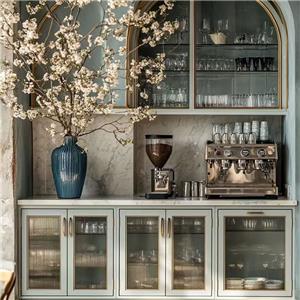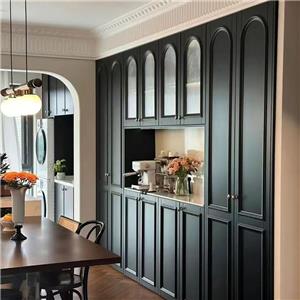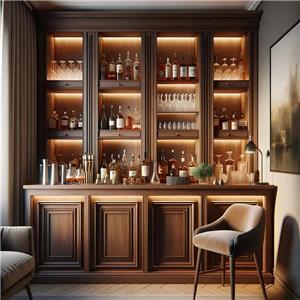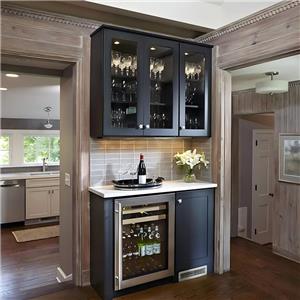How deep does a bar cabinet need to be?
In home design, a bar cabinet is not only a space for storing wine, but also an important element of taste display in the home. When you decide to install a liquor cabinet in your home, in addition to considering the appearance and function of the liquor cabinet, you must also seriously consider its size and depth. After all, a suitable bar cabinet must not only be able to perfectly integrate into the home environment, but also ensure that all kinds of wine can be reasonably stored.
So, how deep does a bar cabinet need to be? What are the standard dimensions of a bar cabinet? This article will delve into these issues and provide you with a comprehensive guide.
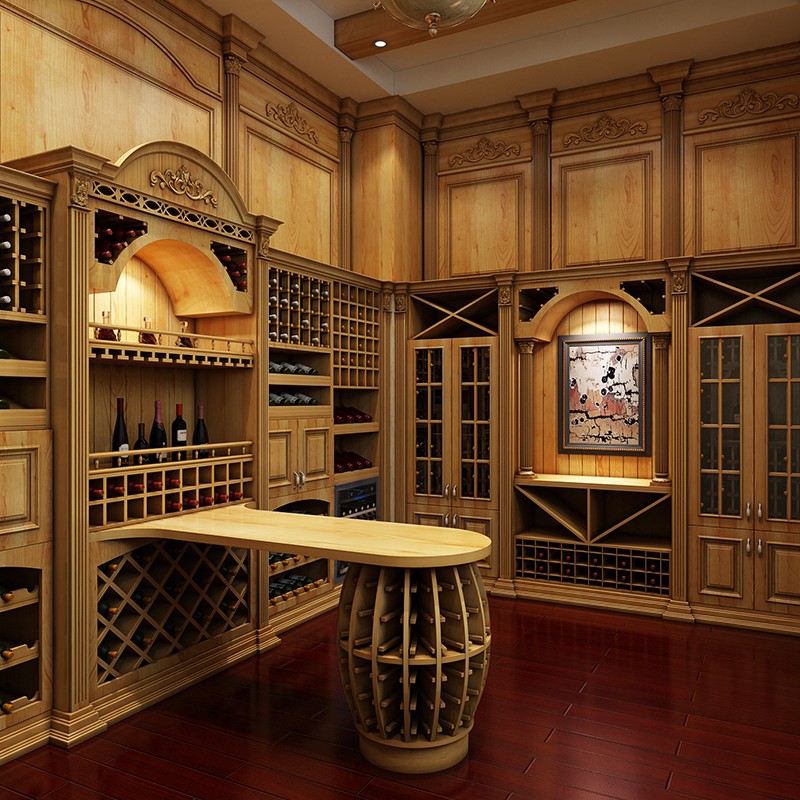
What is a bar cabinet?
A bar cabinet is a piece of furniture specially used to store alcohol, especially wine. It not only has storage functions, but also can adjust temperature and humidity according to needs to ensure that the wine is stored in the best conditions. The design of a bar cabinet is not only for storing wine bottles, but also takes into account the display effect and the classified storage of wine bottles, making the bar cabinet an important highlight in home decoration.
Why is the size and depth of a bar cabinet important?
Choosing the right bar cabinet size and depth not only affects the storage capacity of the bar cabinet, but is also directly related to the preservation quality of the wine. Wine bottles vary in size, especially for wines of different origins and types, their bottle designs may vary greatly. Therefore, when designing or selecting a liquor cabinet, the depth and size of the liquor cabinet must be taken into account to ensure that it can store various types of wine bottles, while also considering the placement space of the liquor cabinet and the coordination of the overall home.
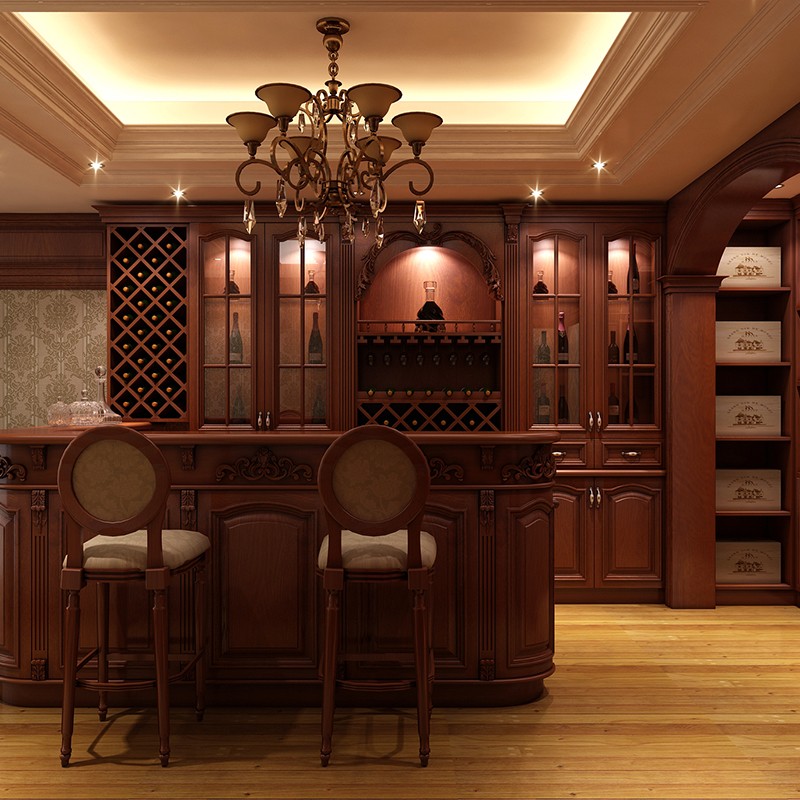
What are the standard dimensions of a bar cabinet?
Standard height of a bar cabinet
The height of a bar cabinet can be selected according to family needs and storage volume. Generally speaking, the height of a standard bar cabinet is between 150 cm and 200 cm. Bar cabinets of this height usually have multiple layers of storage space to accommodate more wine bottles. In addition, there are also some low bar cabinets with a height of between 80 cm and 120 cm, which are suitable for placing in the corner of a dining room or living room as an auxiliary storage space.
1. Single-layer bar cabinet: Generally suitable for placing a small number of wine bottles, usually between 50 cm and 70 cm in height. This type of bar cabinet is more suitable for small households or as a simple wine storage solution.
2. Multi-layer bar cabinet: This is the most common type of bar cabinet for home use, usually between 150 cm and 200 cm in height. This type of bar cabinet is divided into multi-layer storage racks, which can store a large number of bottles while also making effective use of vertical space.
3. Built-in liquor cabinet: The height of the built-in liquor cabinet is usually customized according to the overall design of the cabinet or home, usually between 90 cm and 200 cm. Its advantage is that it can perfectly blend with the overall home style.
Standard width of liquor cabinet
The width of the liquor cabinet determines the capacity and placement of the liquor cabinet. The standard liquor cabinet width is usually between 60 cm and 100 cm, and this size of liquor cabinet can accommodate up to 50 to 100 bottles of wine. For some smaller home bar cabinets, the width is usually between 40 cm and 60 cm, which is suitable for storing 20 to 30 bottles of wine.
1. Single-row liquor cabinet: This type of liquor cabinet is usually between 30cm and 40cm wide, suitable for narrow spaces, and can usually store 10 to 20 bottles of wine.
2. Double-row bar cabinet: Double-row bar cabinets are usually between 50cm and 70cm wide, can hold two rows of wine bottles at the same time, have a large capacity, and are suitable for medium and large families.
3. Large bar cabinet: Large bar cabinets with a width of 80cm to 100cm are usually designed for professional collectors and can store up to 100 bottles of wine.
Standard depth of liquor cabinet
The depth of a liquor cabinet is a key factor affecting the placement and storage of wine bottles. The depth of a standard bar cabinet is usually between 50cm and 60cm, which can easily accommodate a standard 750ml wine bottle. For some small or built-in bar cabinets, the depth may be between 40cm and 50cm. Although this design saves space, it may be limited when storing larger or specially shaped wine bottles.
1. Standard depth liquor cabinet: The depth is between 50cm and 60cm, which is suitable for most households and can accommodate wine bottles of various shapes and sizes.
2. Shallow depth bar cabinet: The depth is between 40cm and 50cm, which is suitable for households with limited space, but may limit the choice of wine bottles.
3. Adjustable depth bar cabinet: Some high-end bar cabinets are designed with adjustable depth, which can be adjusted according to the size of different wine bottles, providing more flexibility.
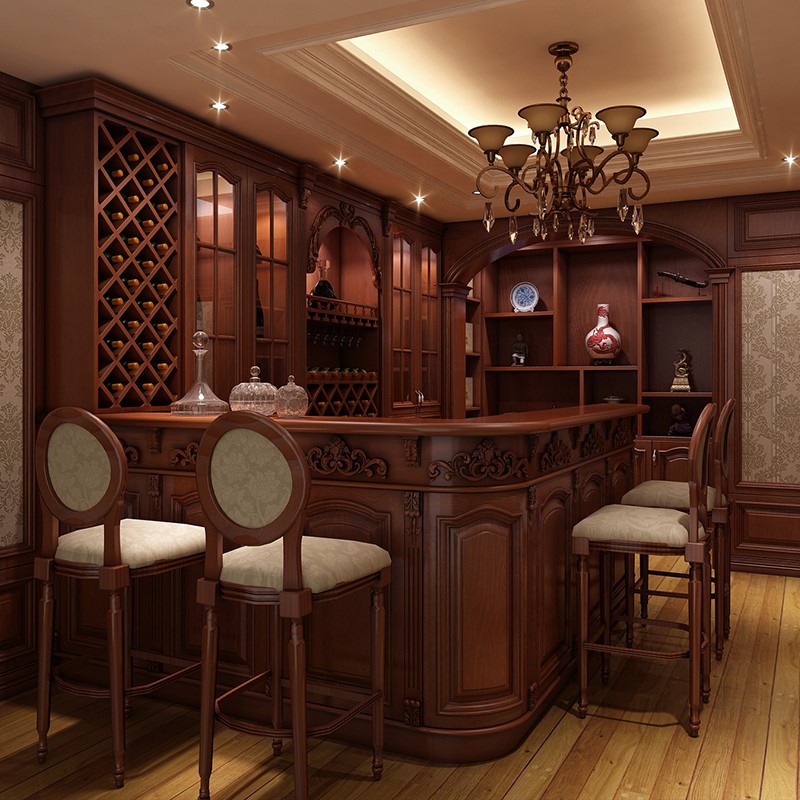
What are the size requirements for different types of bar cabinets?
1. Freestanding bar cabinet
Freestanding bar cabinets are the most common type of bar cabinets and are usually designed as a stand-alone furniture unit placed in a corner of the home. For freestanding bar cabinets, the size can be relatively flexible, but the depth usually needs to be between 50cm and 60cm to ensure that most standard-sized wine bottles can be stored.
2. Built-in bar cabinet
Built-in bar cabinets are usually designed to be integrated with kitchen cabinets or other furniture. The depth of this type of bar cabinet is usually consistent with the depth of the cabinet, usually between 45cm and 55cm. Built-in bar cabinets have the advantage of saving space, but they may be limited when choosing bottles, especially for some larger champagne bottles or bottles with special shapes.
3. Display bar cabinets
Display bar cabinets not only focus on storage functions, but also emphasize the display effect of wine bottles. Such bar cabinets are usually designed to be shallow, with a depth of generally between 40 cm and 50 cm, so that the labels and appearance of the bottles can be displayed more prominently. Display bar cabinets are usually used in living rooms or dining rooms, and are a practical and beautiful choice.
How to choose the right liquor cabinet size?
1. Consider the size and type of wine bottles
When choosing the size of a liquor cabinet, the first thing to consider is the size and type of wine bottles you will be storing. The standard 750 ml wine bottle is the benchmark for liquor cabinet design, but if you have a wider collection of wine bottles, such as champagne bottles, large-capacity wine bottles, or some special-shaped bottles, then you need to choose a liquor cabinet with a deeper depth, or choose a liquor cabinet with adjustable partitions.
2. Choose according to the space in your home
The size of the liquor cabinet should also be selected according to the space in your home. If your home space is spacious, you can choose a large, freestanding liquor cabinet, which can not only store more liquor, but also serve as a decorative highlight in your home. If space is limited, embedded or shallow depth liquor cabinets are more suitable. They can better integrate into the overall home design without taking up too much floor space.
3. Balance between function and beauty
When choosing the size of a liquor cabinet, you should consider not only its storage function but also its aesthetics. A bar cabinet that is too large may appear bulky, while a bar cabinet that is too small may not meet your storage needs. The best way is to choose a bar cabinet size that is both practical and beautiful according to the style of your home and actual needs. Consider the design style and material of the bar cabinet so that it can be coordinated with other furniture and decoration styles in your home.
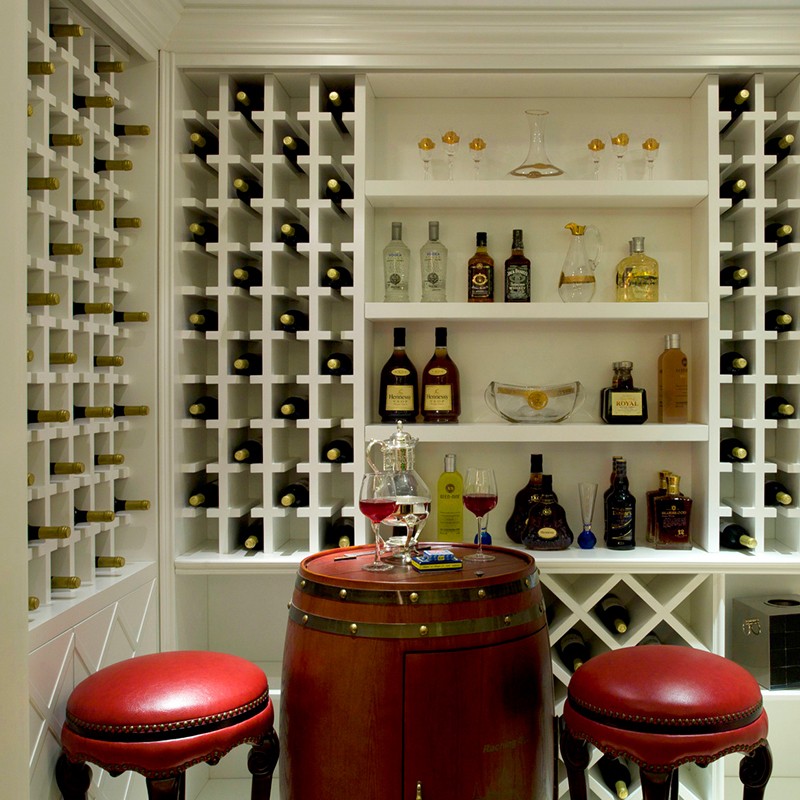
Customization options for liquor cabinets
1. Why choose a customized liquor cabinet?
Although standard-sized liquor cabinets are suitable for most families, customized bar cabinets are a better choice for some special spaces or collection needs. Custom liquor cabinets can be designed according to the size and shape of your home space, as well as your personal preferences. Whether it is size, depth or material, it can be customized completely according to your needs.
2. Custom liquor cabinet size design
The size of a custom liquor cabinet can be adjusted completely according to your space. For example, if the space in your home is relatively narrow, the custom liquor cabinet can be designed to be more slender, and the depth can be controlled at about 40 cm. If you have a dedicated wine cellar or a spacious dining room, the custom liquor cabinet can be designed to be more spacious, and even some display features can be added, such as transparent glass doors, internal lighting, etc., making it both practical and beautiful.
What are the advantages of custom liquor cabinets?
1. Fully meet space requirements: Custom liquor cabinets can be designed according to the size of your room, whether embedded or freestanding, it can perfectly fit your home environment.
2. Meet personalized needs: Whether you collect red wine, white wine or champagne, custom liquor cabinets can design different storage areas according to different types of bottles, and even design dedicated display areas.
3. Diversity of materials and styles: Customized liquor cabinets can choose different materials, such as solid wood, metal, glass, etc., and the style can also be adjusted according to the home decoration style, making it a part of the home decoration.
Is Gagaluna suitable for customized high-end residential projects?
Absolutely. Gagaluna serves clients who require elegant, customized solutions for premium residential interiors. Our high-end wardrobes, decorative wall panels, and designer doors are crafted with care and attention to detail. We supply personalized designs, refined materials, and flexible production for upscale developments, all while offering fair pricing and global delivery.

